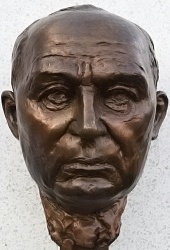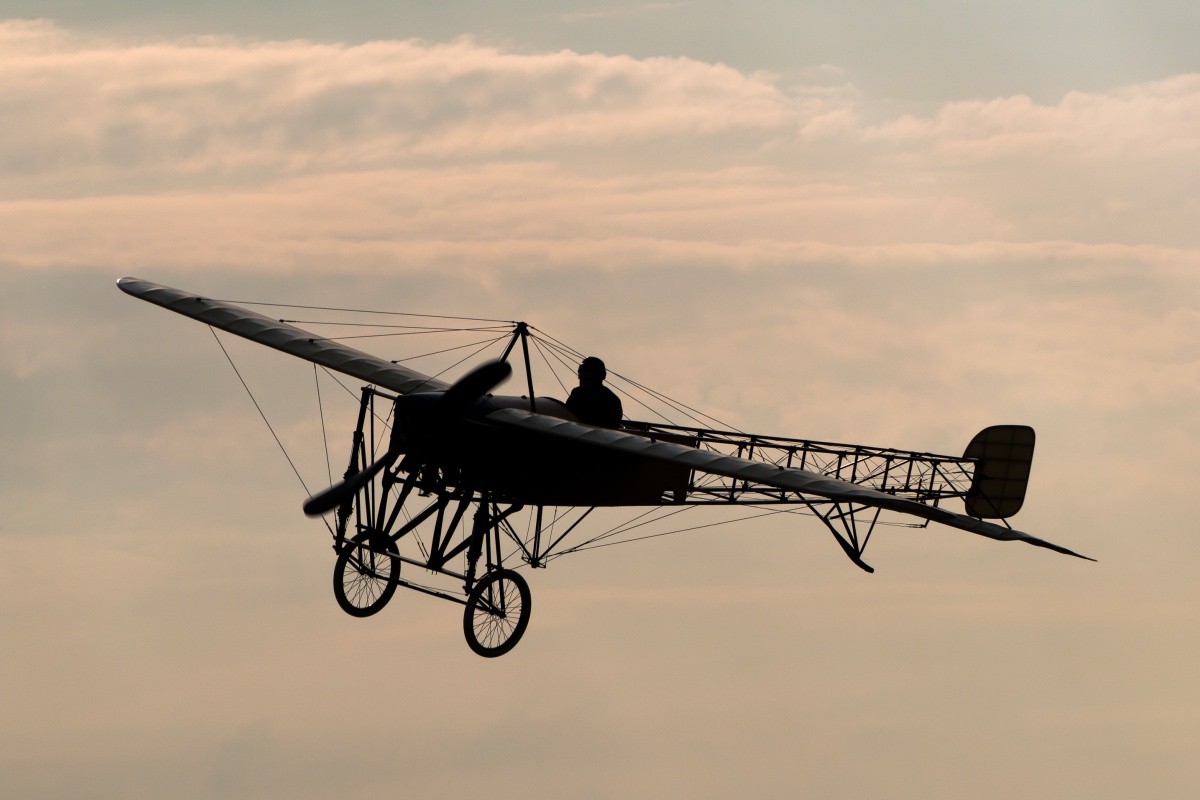 Štefan Banič was a Slovak designer and inventor who made his mark in aviation history by inventing his ingenious parachute system. We know about him today only because his invention was recognized and registered on the US patent list on August 25, 1914. At the end of the thirties he also became a co-discoverer of the Drina Cave in the Smolenice Karst. It has its monument not only in its native Smolenice, but also in front of the main terminal of the airport of M. R. Štefánik.
Štefan Banič was a Slovak designer and inventor who made his mark in aviation history by inventing his ingenious parachute system. We know about him today only because his invention was recognized and registered on the US patent list on August 25, 1914. At the end of the thirties he also became a co-discoverer of the Drina Cave in the Smolenice Karst. It has its monument not only in its native Smolenice, but also in front of the main terminal of the airport of M. R. Štefánik.
He was born into a peasant family on November 23, 1870 in Neštich (present-day Smolenice Nová Ves). After leaving elementary school he worked as an agricultural worker on Páflfy’s property, later he trained as a bricklayer and worked on the construction of the Smolenice Castle. Poverty, however, drove him to America in 1907. There he found occasional work on farms and mines and eventually settled in Greenville, Pennsylvania, where he worked in an engineering plant. At that time, the United States and the world were thrilled by the flights of the first aircraft, especially the Wright brothers. Banic was one of their great admirers, but in 1912 he witnessed a plane crash and therefore began to explore the idea of inventing a device that would save the aviator in an accident. The following year he managed to construct a usable parachute, shaped like a large umbrella with an opening in the middle of the canopy, which was opened by a system of several springs.
However, he was not alone in this issue. The famous inventor Leonardo da Vinci played with this idea, but the first jump dates back to 1783 when the French physicist Louis Sebastien Lenormand jumped off the tower of the Paris Observatory. Another person who moved the parachute development a bit further was Andre-Jacques Garnerin, when on 22nd October 1797 he made a balloon jump at a height of 700 m. The development continued only in the 19th century and in 1890 in your backpack. In 1911, the Italian inventor Pino obtained a patent for a new parachute. He has already worked with the idea of opening a small parachute, which pulls out of the parachutist’s backpack and opens the carrier parachute. In the same year, Russian inventor Gleb Yevgenievič Koteľkinov allegedly patented the bag parachute. His parachutes were said to be known by the abbreviation KR-1 and the first seventy pieces produced in 1914 for the crew of heavy bomber aircraft Ilya Muromec.
Banič parachute system
This year, Štefan Banič’s invention, which was granted US Patent No. 1108484 in the United States on August 25, is also on the scene.
“Let it be known that I, Stephan Banic, a native of the Austro-Hungarian Empire, based in Greenville, Mercer County, Pennsylvania, has invented some new effective parachute improvement, which I give in the following detailed explanation.”
This is followed by a detailed description of the construction of the new parachute, the function of the individual parts and precise technical drawings. The title page of the patent document states that it has been complied with legal requirements, grants Stepan Banic and his heirs the right to patent the invention for a period of seventeen years, and the statement that only the United States has the special right to manufacture, use and sell the invention.
It was a very sophisticated and reliable system at that time. He had solved the problem of so-called swimming in the air, which allowed a potential user to sail through the air to a place suitable for landing. He had no cords, but fastened with straps directly to the body in the chest area. He jumped off the roof of the 15th-story Washington building on June 3, before the US Air Force Patent Office. This was followed by further demonstrations of useful parachute improvement, including a plane jump. He also offered his patented invention to the then representatives of the Air Force, the US Army bought it and appointed him an honorary member. Unfortunately, only modest and incomplete materials have been preserved to this day.
In the 1920s he returned to his native town of Neštich in Slovakia, where he lived as a mason master in seclusion and devoted himself to fruit growing until the end of his life. In the late thirties his name appears again, this time in connection with the discovery of the Driny cave in the Smolenice Karst. However, he did not discover it alone, but together with his brother John and a pair of Vajsablovec and Vallovec brothers. Subsequently, he helped his colleagues to access the first 174 meters of this natural karst formation. He died at the age of 70 on January 2, 1941.
Tribute to the inventor
On the occasion of the 100th birth of Štefan Banič, a dignified monument by academic sculptors Vladimír Môťovský and Ing. Otto Wiesner. The work represents an open parachute made of rolled aluminum sheets with a bust with text cast from hydronium on its center. Due to the reconstruction of the terminal and the need to restore the memorial, it was removed from its original location in 2009. After rectification general investor Bratislava in May 2019 was again unveiled at almost the same spot.
The inventors, however, did not forget in his native village, where he was in front of the KSD building Smolenická Nová Ves on 9 June 2006 a monument was unveiled. The work by architect Peter Sedláček and sculptor Peter Valach consists of a block of dense ground concrete on which a bust with an inscription this time (probably) made of bronze is added again, accompanied by a small silhouette of the Banič parachute system of the same material.
source:
https://cs.wikipedia.org/wiki/Padák
https://cs.m.wikipedia.org/wiki/Štefan_Banič
https://cs.wikipedia.org/wiki/André-Jacques_Garnerin
https://smolenice.com/navstevnik/osobnosti/stefan-banic/
https://www.bts.aero/o-letisku/press/tlacove-spravy/odhalenie-pomnika-stefana-banica-a-zakladneho-kamena-terminalu/

